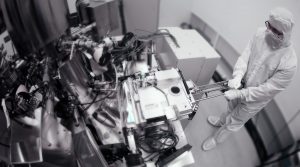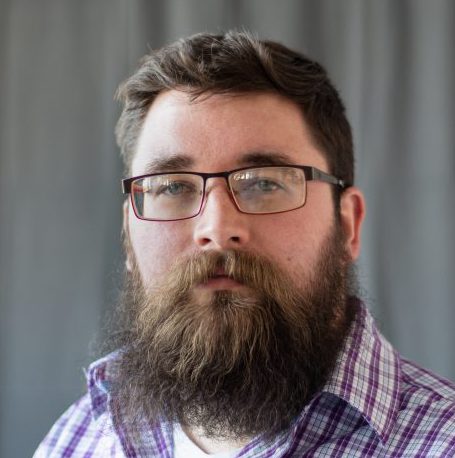
WNF: What is your role at WNF?
Shane Patrick: My primary responsibility is electron beam lithography and associated training and processing. The WNF houses one of the most advanced electron beam systems available, our JEOL JBX-6300FS, which supports resolutions far below what is achievable with standard ultra-violet light lithography. Performance comes with complexity, and it’s my job to lower the barrier to entry on this system by providing maintenance support and training. I also execute projects on behalf of customers so that they can focus on the design and analysis portions of their research rather than spending time learning to run the hardware and software. I also function as interim lab director for the facility while we search for a new WNF director – handling safety, user concerns, daily operations, and budgeting decisions while also collaborating with our stakeholders and advisory board members to keep the lab moving forward and relevant in this industry.
WNF: In your opinion, what makes WNF unique?
Patrick: Anyone with the money can build a cleanroom, but the WNF has a long history, including a few transitions in both facilities and management. We’ve gained a lot of insight into what works well, what doesn’t, and we’ve been able to leverage the industrial knowledge of our current and past staff members to establish best practices. All of this culminated in a remodel that ended in late 2017, pulling those lessons together to position our new facility to support a variety of needs. We are open to the public, and unlike traditional industrial tool lines, we can be very flexible in the processes we offer. In addition, our current technical staff ranges from seasoned industrial workers to advanced academic researchers. This diversity in knowledge bases allows us to assess user and project needs and provide well-analyzed projections of feasibility and potential options to move towards a successful outcome.
WNF: What is your favorite thing about working at WNF?
Patrick: Every day is a new experience. Our open use model and mix of academic and industrial users means there’s always something new moving through. That range of processing comes with a lot of challenges, particularly around maintaining existing processes while incorporating new ones. At the same time, we are always learning more and more and very creative and ingenious projects and researches look to leverage our capabilities to the fullest. Our users challenge us to grow our capabilities, and we challenge our users to consider alternative paths to their outcomes. There’s always something new to learn here, as there should be on the campus of a well-respected research institution like the University of Washington.
